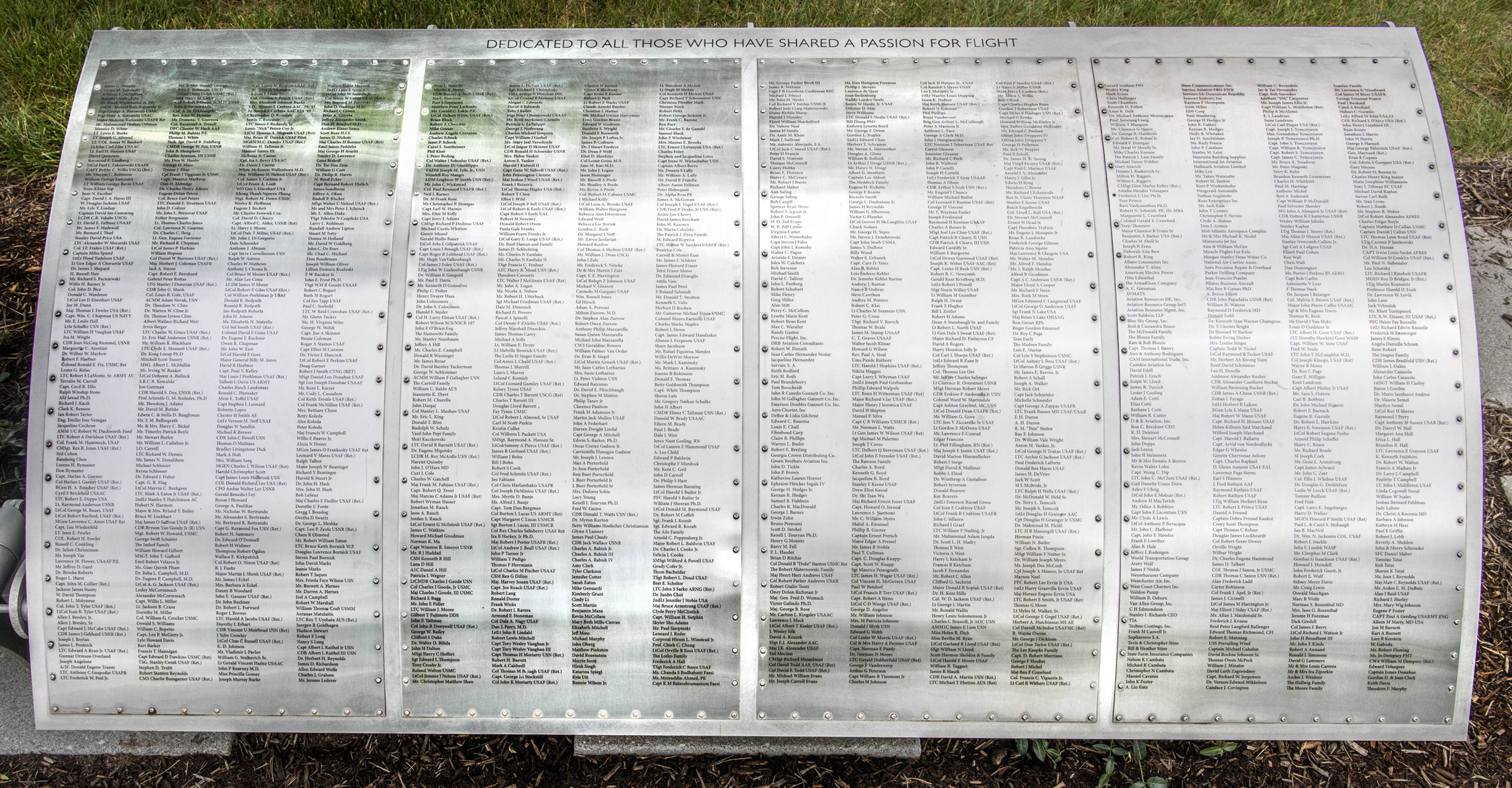Fred W. Soule
Foil: 5 Panel: 4 Column: 3 Line: 54
Wall of Honor Level: Air and Space Friend
Honored by:
Ms. Shirley L. Soule
FRED W. (SLIM) SOULE was born May 12, 1907 and died November 18, 1995. He was a well-known aviator who won national recognition as a pioneer in autogiro and helicopter development.
He was one of eight children of Mercy and Sidney Soule and was born in Duxbury, Massachusetts. He was written up in the book, "Who's Who in Aviation." Mr. Soule was nicknamed "Slim" because of his uncanny resemblance to Charles A. Lindbergh. He was a test pilot for the Lycoming Motor Company, Williamsport, Pennsylvania.
He went to the Wilkes-Barre, PA airport in 1930 to join the Martz Air Lines then operating between Wilkes-Barre, New York, and Buffalo. (In early flying days an air mail pilot ranked right up there with movie stars when it came to glamour. At that time virtually all cross country flight was done under visual conditions, navigating from point to point by computing airspeed and time, as there were no radios.) Later in the same year Mr. Soule became chief instructor of the Wilkes-Barre Airport.
From 1930 to 1935 Mr. Soule was associated with the Horizon Aerial Advertising Company and it was during this time that he flew more hours in an autogiro than any man in the world. Theatergoers would recall the Fox Movietone of Mr. Soule flying over Niagara Falls. Mr. Soule flew over the water at a height of ten feet and then dropped vertically into the chasm in his autogiro for a distance of 150 feet, the mist completely obscuring his plane. This feat had never been attempted by any other pilot up to that time in 1935.
The Horizon Company produced Silverbrook Coal and hired Mr. Soule to fly their PCA-2 Autogiro, one of the first to be sold commercially in 1931. He flew this autogiro in some of the most rugged terrain in the east for several years without any problems.
In May 1934, Mr. Soule was commended by the Connecticut Aviation Commission for his action in saving the lives of several children. Motor trouble forced him to face the alternative of landing in the Central Park or to "bail out" over the New Haven Bay. Rather than risk the lives of the children playing in Central Park he chose the latter course, losing his plane in the bay. It was at this time that he became a member of the Caterpillar Club, composed of fliers who at one time or other used the parachute.
By the end of summer of 1939, Mr. Soule had accumulated thousands of hours in autogiros. Recognizing that a war in Europe was coming, Harold F. Pitcairn, looking for a test pilot for his PA-36 program, found just the man he needed, Slim Soule, working for the Department of Agriculture in Bloomfield, New Jersey.
In October 1941, Mr. Soule flew to College Park, Maryland where he made perfect jump-takeoffs for observers from the Department of Commerce and the Interior, then hopped off, following the Anacostia River to its confluence with the Potomac, where at Bolling Field he demonstrated the extraordinary flight characteristics of the PA-36 Whirling Autogiro to the U.S. Army Air Corps' top brass, including General H. H. Arnold. During this, and succeeding, demonstrations he showed that the autogiro could do everything that the military needed and to make the lack of a practical helicopter clear. After the success of the autogiro, development and experimentation of helicopters came into being. The federal government favored helicopters because of their ability to hover.
After the war ended, Mr. Soule was hired to pilot the GA-45 renamed Bell-47, the first helicopter in history to receive an Approved Type Certificate in March 1946. He demonstrated the Bell-47 all over the east. He used two Bells in his operation of aerial application of cranberry bogs in New England. Mr. Soule agreed to fly one of the Bells to the lawn at Mr. Pitcairn's home, where he had landed many times before in autogiros, for a close examination by the patent lawyers, engineers, and technical experts of the Autogiro Company. Since Mr. Pitcairn had patented many of the autogiro's features, the investigation found that the Bell contained some of the same features of the autogiro.
Some of the above information was provided by Mr. Soule's widow, Cristy E. Soule, nee Budinger, whom he married April 14, 1934. They had one son, John W. Soule (April 9, 1935-December 8, 1993) who followed in his father's footsteps and became a Captain with United Air Lines. Other information is contained in the book, "Legacy of Wings-The Harold F. Pitcairn Story" by Frank Kingston Smith, 1981, Jason Aronson, Inc., NY, NY. Other information was provided by a newspaper clipping dated August, 1935; name of the newspaper is unknown, but is thought to be a local paper in the Wilkes-Barre area.
Wall of Honor profiles are provided by the honoree or the donor who added their name to the Wall of Honor. The Museum cannot validate all facts contained in the profiles.
Foil: 5
All foil images coming soon.View other foils on our Wall of Honor Flickr Gallery
